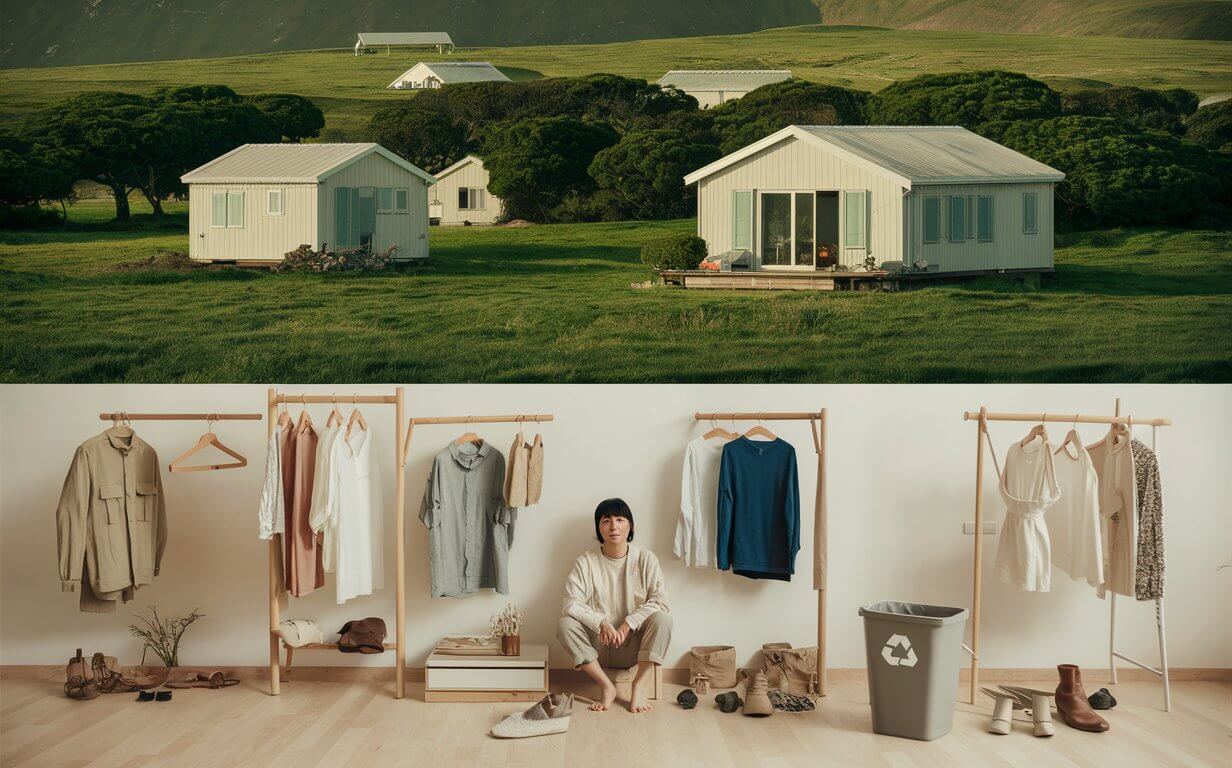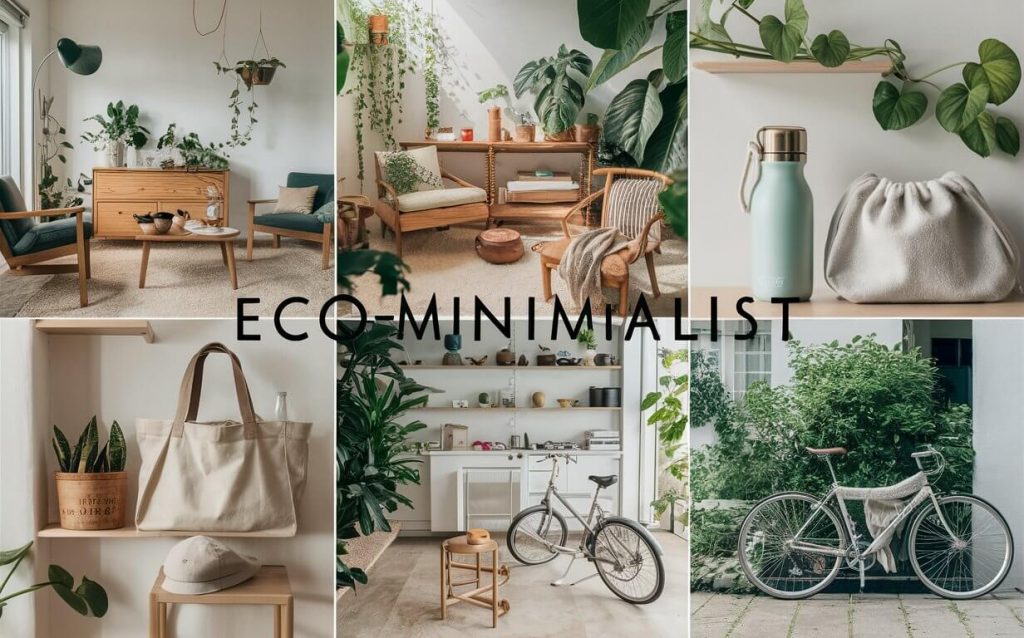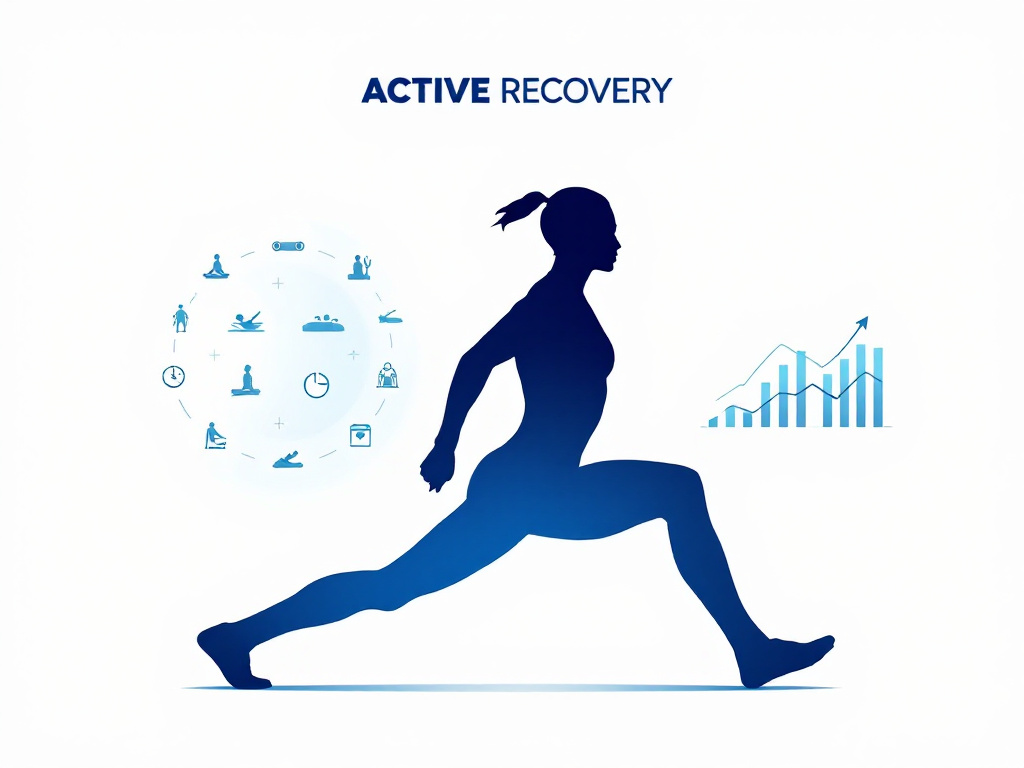In a world drowning in stuff, a quiet revolution is taking place. Eco-minimalism, the art of living with less for the sake of our planet, is gaining traction among those who seek to make a difference. But can decluttering your closet really save the Earth? Let’s dive into how embracing minimalism can be a powerful form of environmental activism.
Table of contents
- Understanding Eco-Minimalism: Less Stuff, More Impact
- The Environmental Toll of Our Stuff
- How Minimalism Promotes Sustainability
- Practical Steps Towards Eco-Minimalism
- The Ripple Effect: Beyond Personal Impact
- Overcoming Challenges in Adopting Eco-Minimalism
- Eco-Minimalism Success Stories
- The Future of Eco-Minimalism
- Conclusion: Small Changes, Big Impact
- References
Understanding Eco-Minimalism: Less Stuff, More Impact
Eco-minimalism isn’t just about having a tidy home—it’s a lifestyle that combines the principles of minimalism with environmental consciousness. At its core, it’s about intentionally reducing our consumption and focusing on what truly adds value to our lives while minimizing our ecological footprint.
The concept isn’t new. Throughout history, philosophers and spiritual leaders have advocated for simple living. But in today’s context of climate change and overflowing landfills, eco-minimalism has taken on a new urgency. It’s no longer just a personal choice; it’s a way to actively combat environmental degradation.
The Environmental Toll of Our Stuff
Before we explore the benefits of eco-minimalism, let’s confront an uncomfortable truth: our appetite for stuff is eating up the planet. The numbers are staggering:
- Global consumption of materials is expected to more than double from 79 billion tonnes in 2011 to 167 billion tonnes in 2060. [1]
- The fashion industry alone is responsible for 10% of annual global carbon emissions. [2]
- E-waste reached a record 53.6 million metric tonnes in 2019. [3]
Each new product we buy comes with a hidden price tag of resource depletion, energy consumption, and waste generation. By embracing eco-minimalism, we’re not just decluttering our homes—we’re actively reducing demand for new products and the environmental havoc they wreak.
How Minimalism Promotes Sustainability
Adopting an eco-minimalist lifestyle isn’t about deprivation; it’s about optimization. Here’s how living with less can have a big impact:
1. Reduced Demand, Reduced Production
When we buy less, we send a powerful message to manufacturers. Lower demand means less production, which translates to fewer resources extracted, less energy consumed, and less pollution generated. It’s a simple equation with profound implications.
2. Energy Savings at Home
Smaller living spaces, a common feature of minimalist lifestyles, require less energy to heat, cool, and maintain. The American Council for an Energy-Efficient Economy reports [4] that reducing your home size by half can result in a 36% reduction in energy use.
3. Mindful Consumption
Eco-minimalism encourages us to be more intentional about our purchases. By focusing on quality over quantity and choosing products with lower environmental impacts, we can significantly reduce our personal carbon footprints.
Practical Steps Towards Eco-Minimalism
Ready to embrace eco-minimalism? Here are some practical steps to get started:

Declutter with Purpose
Start by assessing what you own. Be honest about what you need and use regularly. Donate, recycle, or responsibly dispose of items you no longer need. Remember, the goal isn’t just to clear space—it’s to prevent future unnecessary purchases.
Adopt a Capsule Wardrobe
A capsule wardrobe consists of a limited number of versatile, high-quality pieces that can be mixed and matched. This approach not only simplifies your life but also reduces the environmental impact of fast fashion. Studies show that wearing clothes [5] for just nine months longer could reduce their carbon, water, and waste footprints by 20-30%.
Embrace Multi-Functional Items
Look for products that serve multiple purposes. A smartphone can replace a camera, calculator, and music player. A versatile piece of furniture can adapt to different needs. By choosing multi-functional items, you reduce the overall number of possessions you need.
Digital Minimalism
Don’t forget about your digital life. Unsubscribe from unnecessary emails, delete unused apps, and be mindful of your digital consumption. Not only does this reduce mental clutter, but it also decreases the energy demand of data centers, [6] which account for about 1% of global electricity use.
The Ripple Effect: Beyond Personal Impact
When you embrace eco-minimalism, your impact extends far beyond your own carbon footprint. You become part of a movement that’s reshaping societal norms and influencing industry practices.
Companies are taking notice of changing consumer preferences. The rise of minimalism has led to increased demand for durable, sustainably produced goods. Brands like Patagonia [7] have built their reputation on producing high-quality, long-lasting products and even encouraging customers to repair rather than replace.
Moreover, as more people adopt minimalist lifestyles, it normalizes the idea of living with less. This cultural shift is crucial for addressing overconsumption at a societal level.
Overcoming Challenges in Adopting Eco-Minimalism
Transitioning to an eco-minimalist lifestyle isn’t without its challenges. Here are some common hurdles and how to overcome them:

Societal Pressure to Consume
We’re constantly bombarded with messages to buy more. Combat this by cultivating awareness of your true needs versus wants. Surround yourself with like-minded individuals or join online communities focused on sustainable living for support and inspiration.
Finding Balance
Minimalism doesn’t mean living uncomfortably. It’s about finding the right balance for you. Start small and adjust as you go. Remember, the goal is to optimize your life and reduce your environmental impact, not to achieve some arbitrary standard of minimalism.
Maintaining Motivation
Like any lifestyle change, staying motivated can be challenging. Keep educating yourself about environmental issues and the impact of your choices. Celebrate small victories and remember that every action, no matter how small, contributes to positive change.
Eco-Minimalism Success Stories
The power of eco-minimalism is best illustrated through real-life examples. Take Lauren Singer, founder of Trash is for Tossers [8]. Her journey into zero-waste living began with the decision to reduce her possessions and be more mindful of her consumption. Today, she fits four years’ worth of trash into a single mason jar and has inspired thousands to reduce their waste.
On a larger scale, the tiny house movement exemplifies eco-minimalism in action. Residents of tiny houses have an average carbon footprint of 14,000 pounds of CO2 per year, [9] compared to 28,000 pounds for the average American.
These success stories show that embracing eco-minimalism can lead to significant environmental impacts and personal growth.
The Future of Eco-Minimalism
As we face increasing environmental challenges, eco-minimalism is poised to play a crucial role in sustainable living. Emerging trends like the sharing economy, which reduces the need for individual ownership, align perfectly with minimalist principles.
The potential for widespread adoption of eco-minimalism is significant. A study by Euromonitor International [10] found that 65% of consumers worldwide were trying to have a positive impact on the environment through their everyday actions.
As eco-minimalism integrates with other environmental movements, such as regenerative agriculture and renewable energy, it has the potential to create a holistic approach to sustainable living.
Conclusion: Small Changes, Big Impact
Eco-minimalism isn’t just about decluttering—it’s about reimagining our relationship with stuff and, by extension, with our planet. By choosing to live with less, we can significantly reduce our environmental impact, influence industry practices, and contribute to a cultural shift away from overconsumption.
Remember, you don’t have to overhaul your life overnight. Start small. The next time you’re tempted to buy something, pause and ask yourself: Do I really need this? How will this impact the environment? These simple questions can be the first steps on your journey to eco-minimalism.
In a world where individual actions can feel insignificant in the face of global challenges, eco-minimalism offers a tangible way to make a difference. By living with less, we can collectively create a more sustainable future. After all, when it comes to saving our planet, less really can be more.
References
- OECD. (2019). Global Material Resources Outlook to 2060.
- World Bank. (2019). How Much Do Our Wardrobes Cost to the Environment?
- ITU. (2020). The Global E-waste Monitor 2020.
- American Council for an Energy-Efficient Economy. (2010). Size Matters: The Impact of Home Size on Energy Efficiency.
- WRAP. (2017). Valuing Our Clothes: the cost of UK fashion.
- IEA. (2022). Data Centres and Data Transmission Networks.
- Patagonia. Worn Wear: Better Than New.
- Trash is for Tossers. About Lauren Singer.
- Carrigan, M. (2019). Environmental Impacts and Potential of the Sharing Economy.
- Euromonitor International. (2021). Top 10 Global Consumer Trends 2021.










